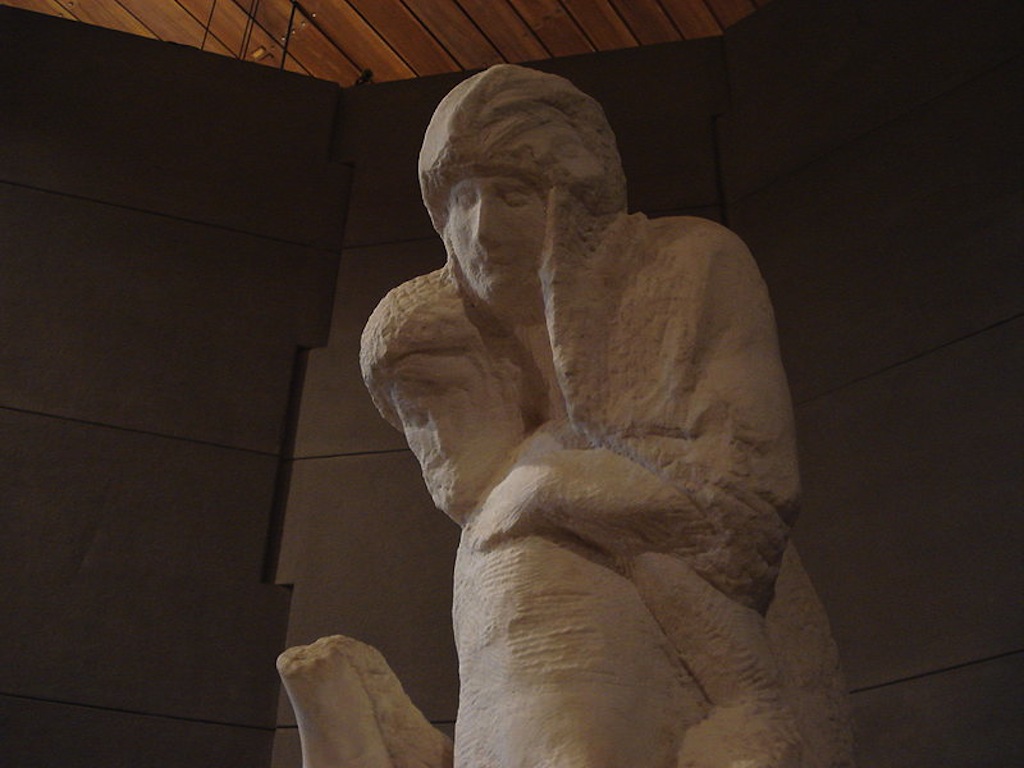Expo 2015: Milan, 14 pavilions for Italian art

The governor Roberto Maroni and the art critic Vittorio Sgarbi showed a thematic itinerary between the historical palaces of the city in view of Expo.
«Enhancing Milan as capital of culture» through 14 pavilions, spread in likewise locations of the city. This is the goal of the strange couple Vittorio Sgarbi-Roberto Maroni, the first one as Ambassador of Art for Italy at Expo, the second one as president of Lombardy Region. And not only. Sgarbi and Maroni’s ideas include a «pavilion of the heart» ideally joining together Milan and Urbino, art city, according to the slogan «Where your heart is there is the pavilion».
A FIGHT FOR THE BRONZES
And right the art critic started the very heated controversy concerning the Riace Bronzes. Insomuch as the relevant minister had to intervene: indeed, Dario Franceschini expressed the necessity of a special committee to evaluate the potential negative effects caused by the movement of both bronze statues in view of a potential transfer for Expo, as an answer to the stated request by Vittorio Sgarbi to move the Bronzes to Milan to expose them even in the First pavilion, the symbol of the Universal Exposition or a pavilion realized purpose by Lombardy Region. According to Sgarbi the Bronzes are «everyone’s heritage, national heritage and State assets. And exposed in Milan, they will be good also for the image of Calabria bringing an undoubted attention to the place where they are usually held». Sgarbi is a swollen river: «It is inconceivable that people coming to Milan, among thousand solicitations, meditate to go to visit Reggio Calabria. Furthermore the fortune they will get in Milan can be reinvested in Calabria, to the service of other abandoned and much more fragile goods»
A PAVILION DEDICATED TO BRAMANTE
But Milan has much to offer. Here that Holy Mary at St. Satyr and the church of Holy Mary of Grace, will be the places proposed as pavilion 2 dedicated to Bramante, with the exposition of the frescoes from Punigarola house and of Christ at the column.
TWO PAVILIONS FOR LEONARDO
While pavilions 3 and 4 are dedicated to Leonardo. First goal redoubling the number of people that can accede to the Cenacle: from 25 to 50. Lombardy Region, also in partnership with private sponsors, shall assure shifts of eight hours with payments of extraordinary guardians and, for potential requirements, the support of agencies foe evening and night openings from 7 pm to 3 am. For the second pavilion of Leonardo, instead, Bagatti Valsecchi Palace shall host the exposition of the Sforzeide code by Giovanni Pietro Birago.
REASSEMBLING ANTONELLO DA MESSINA’S TRIPTYCH
The same palace would also host the pavilion 5 dedicated to Antonello da Messina, whose famous triptych, currently divided between Uffizi Gallery and Castle of Sforza, would be reassembled.
RONDANINI PIETÀ BY MICHELANGELO PROTAGONIST
Of course Michelangelo could not lack: his Rondanini Pietà, with a reorganization of surveillance shifts, could be the cornerstone of the pavilion number 6.
PAVILIONS DEDICATED TO TIEPOLO, CARAVAGGIO AND RAFFAELLO
Caravaggio and Raffaello protagonists of the pavilion 7, while the number 8 would be dedicated to Tiepolo. Clerici Palace, owning an extraordinary ceiling of the master from Veneto, is the ideal headquarter to expose a set of drawings, such as those of the same ceiling.
THE PAVILION 9 SOUNDS
The edition of the MITO festival with orchestras and concerts from all over the world and the inaugural concert at the Theatre ‘La Scala’, with full rights in the schedule of Expo, would be the protagonists of the pavilion 9.
THERE IS ALSO LITERATURE
For Stendhal, protagonist of number 10, the idea is an itinerary that, from Clerici Palace, touches the Theatre ‘La Scala’, the palaces of via Manzoni, house of the author of The Betrothed Alessandro Manzoni (where setting up the exposition Stendhal and Manzoni), Belgioioso Palace and the museum of the 19th century. Ideal headquarter for the pavilion is the Museum of contemporary History in via Sant’Andrea.
BOTHERED ALSO THE FUTURISTS
At the pavilion 11 under the hand lens there will be the Futurists with their masterpieces from the Museum of the Twentieth Century, from Brera and private collections.
AT THE 13 ARCHITECTURE
The theatre Parenti would host the pavilion 12 as final point of an itinerary dedicated to De Chirico and Savinio, while the pavilion 13 is a homage to the city architecture seen as a great European capital, with a homage to Guglielmo Mozzoni, dead on July 31st and creator of building masterpieces such as Pirelli Palace, Centrale station, Torre Velasca, Mezzanotte Palace, Torre Snia Viscosa of San Babila square and Palace of Art of viale Alemagna.
A TRAVEL THROUGH ANCIENT ART
A dive in ancient art for the pavilion 14 with an exposition in Litta Palace with great private Italian collections and works of Italian art from the 13th to the 20th century.
And then there will be the «non-pavilion pavilions», or rather those without a palace containing them but spread in the territory.
